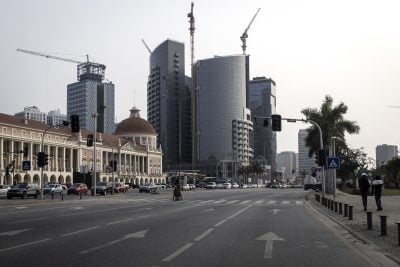Banks in South Africa have reported a reasonable year despite a string of troublesome economic issues that kept the pressure up. Report by Tom Nevin.
Despite a year that verged on annus horribilis, the deputy registrar of South African banks Nkosana Mashiya still found reason to describe the country’s banking sector as “well-managed and the governance structures and management systems remain effective”. The kudos was contained in the 2011 annual report of the bank supervision department in the Reserve Bank, which showed that the operating profit of South Africa’s banks increased by 30% to R49bn ($5.5bn), with bad debts decreasing by R20bn ($2.2bn).
Recurring alarm over South African households’ over-indebtedness was assuaged by the registrar of banks, Rene van Wyk, who found that impaired advances decreased in 2011 from 5.8% of the total to 4.7%, and although unsecured credit remains controversial, with fears the growing bubble will burst sooner or later, Van Wyk says a bigger concern “is what’s happening in Europe and what possible effect that can have on South Africa as a country. We can only speculate. Nobody knows for sure”.
The region’s banking sector was influenced by a number of economic factors that tended to temper the industry’s activities over the year of the report’s review.
Disappointingly, although widely expected, the economy grew by just 1.3% for the third quarter, coupled with a steady inflation rate that remained between the targeted 4%-6% tram lines, the Marikana shootings, interest rates held at 8.5% and growing industry and institutional concern of a looming unsecured lending bubble.
With the exception of Zimbabwe, the economies of southern African states tend to echo the South African situation, being closely tied through the South African Customs Union (SACU) and the Common Monetary Area (CMA). Not being a member of the CMA, Botswana stands somewhat aloof from the rest of the subcontinent and insists on greater autonomy over its financial affairs.
The Banking Association of South Africa (BASA) maintains, however, that there is no impending bubble in unsecured lending and insists credit providers are being prudent. BASA’s CE, Cas Coovadia, says the growth in unsecured lending “is positive and borrowers are being responsible”.
Not everyone is as convinced. The South African Communist Party, a member of the country’s governing tripartite alliance, believes South African banks will be in trouble if they do not deal with the increase in unsecured lending.
SACP General Secretary and Higher Education Minister Blade Nzimande says he foresees “a serious bubble, not dissimilar to that of the rest of the global banking and financial sector, unless drastic action is taken to prevent this”. Nzimande harks back to 2008 when, he says, there was a huge increase in the number of unsecured credit transactions, a phenomenon exactly similar to that which led to the “bursting of the housing bubble in the US, triggering the current global capitalist crisis”.
Liquidity to improve
The rand reacted quickly to the rash of miners’ strikes and the shootings at Lonmin’s Marikana platinum mine, dropping to a three and a half-year low, prompting Finance Minister Pravin Gordhan to note that while the strikes, combined with “gloomy news coming from Europe”, hurt the rand, he foresaw a recovery in the currency as the government moves towards stabilising the situation by bringing together the employer community, trade union movement and the government itself to stabilise the situation. “I’m sure we’ll bounce back and get to some level of new normality,” he says. Reserve Bank Governor Gill Marcus reports R5.6bn ($700m) in net equity market outflows following the Marikana incident. “It’s a huge indicator for us of loss of confidence,” she says.
Most economists are pessimistic about the long-term impacts of the contagion of strikes that seized the country as the year wound down.
Mashiya notes South Africa’s banks have always held more liquidity than required, and had, in fact, increased it since 2009. March 2011 numbers showed that banks held almost double the required liquidity and had made good preparation for the steep requirement South Africa will have to adhere to in terms of Basel III financial regulations.
The Reserve Bank intended phasing in some Basel III regulations from 1st January 2013, with full implementation enabled in 2018. Mashiya notes also that the Reserve Bank has already approved a liquidity facility to assist banks in meeting the requirements of the liquidity coverage ratio in times of stress.
Despite difficult economic circumstances, the four major South African banks (Absa, FirstRand, Nedbank and Standard Bank) posted combined headline earnings of R21.3bn ($2.4bn), up 17% from the comparable period last year and average normalised return on equity (RoE) of 15.9%. This compares favourably to a benchmark group of Western global peers that recorded average RoE for the 2011 financial year in the range of 2.1% for US commercial banks and 14.7% for Canadian banks.
“This was a strong performance by South African banks compared to the Western world. Even more interesting is the composition of earnings for local banks when compared to other countries, which shows that our banks have an enviable non-interest revenue mix and continue to operate at favourable efficiency ratios,” says Johannes Grosskopf, PwC Banking and Capital Markets Leader for Southern Africa.
These are some of the findings from PwC’s South Africa Major Banks Analysis report.
Want to continue reading? Subscribe today.
You've read all your free articles for this month! Subscribe now to enjoy full access to our content.
Digital Monthly
£8.00 / month
Receive full unlimited access to our articles, opinions, podcasts and more.
Digital Yearly
£70.00 / year
Our best value offer - save £26 and gain access to all of our digital content for an entire year!

 Sign in with Google
Sign in with Google 




